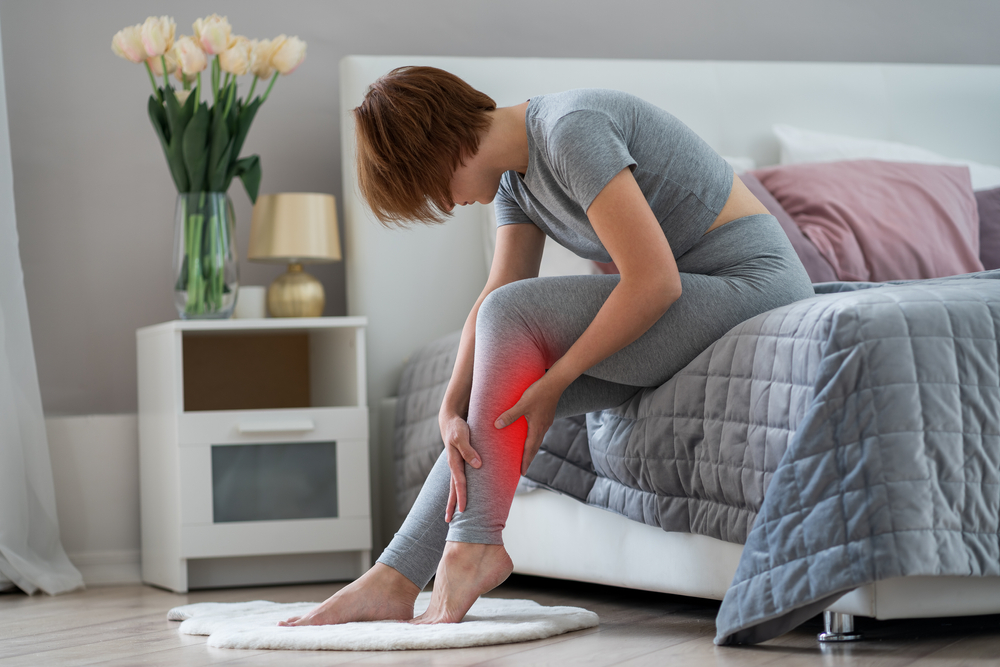Painful Legs: 5 Symptoms and Why They Shouldn’t be Ignored
Painful legs, it’s such a generic term. However, it has a lot of meaning. It means even more for the quality of your life. Although a lot of its symptoms overlap each other, they’re still different and need to be treated as such:
- Burning
- Aching
- Stiffness
- Weakness
- And Soreness
In today’s modern age, everything is go-go-go. From school to work, family, and friends, everyone needs you and there’s always something that needs to be done. Sometimes, it can be difficult to find time for yourself, let alone seek treatment for something that you might’ve been living with for a very long time. After all, not a lot of us regularly ask, “Why do my legs hurt?”
Other times, the very prospect of treatment can be daunting. The Washington Post even put out an article stating, “We procrastinate on tasks we find ‘difficult, unpleasant, aversive or just plain boring or stressful.’ If a task feels especially overwhelming or provokes significant anxiety, it’s often easiest to avoid it.” (Haupt, 2021)
The fact is this: Treatment for painful legs doesn’t have to be… Well, painful. You’re worth taking care of. If not, who’s going to be there for the people who need you most? Who’s going to do what only you can? But action needs to be taken sooner rather than later. Here are five common symptoms of painful legs, what you need to know about them, and what you should do next.
Burning Leg Pain
Burning in the legs is a wide-reaching symptom of painful legs that refers to the sensations of heat, warmth, or pain in the legs. Some people even describe it as a tingling or numbness, while others say it’s more like a sharp, stabbing pain. It can be constant or intermittent, and the feeling itself can range in intensity from mild discomfort to severe pain either localized to a specific area or felt throughout both legs. It may be accompanied by other symptoms and has the potential of getting worse at night or during physical activity.
Aching Pain in Both Legs
Aching pain in both legs can feel like a dull, persistent pain that oftentimes feels impossible to find or reach. It can be felt almost anywhere, from your muscles to your bones and joints, and can be localized to a specific area or be felt throughout the entirety of both legs. It may be accompanied by fatigue, weakness, or cramping. As with other symptoms, the pain can get worse with physical activity or prolonged sessions of standing or sitting. It can also be intensified by certain weather conditions, such as humidity or cold.
Chronic Painful Legs and Stiffness
Like aching pain in both legs, chronic leg pain and stiffness is a persistent and long-term discomfort that doesn’t just happen overnight. Rather, it grows and gradually becomes worse. Sometimes, you become so used to it it’s hard to recognize it anymore. It’s characterized by most as deep, achy, or dull pain, often giving rise to stiffness and a reduced range of motion in either one or both legs, and even the rest of the body. The pain may be felt in the muscles, bones, or joints, and can be localized to a specific area or be felt throughout the leg. Again, it can unintentionally be made worse with physical activity or prolonged sessions of standing or sitting.
Chronic Painful legs and Weakness
Chronic leg pain and weakness is typically where one’s quality of life takes a dramatic turn for the worse, regarding painful legs. You literally can’t do as much as you could before and it’s simply because you lack the strength. Of course, chronic leg pain and weakness is persistent and long-term, but it’s also accompanied by reduced muscle strength and difficulty in performing daily activities. The pain can be dull, achy, or sharp, and can be felt in the muscles, bones, or joints. It may be accompanied by stiffness and decreased range of motion. The lack of strength can truly be felt when trying to stand, walk, or climb stairs. This pain and weakness can affect the quality of life and make it difficult to perform daily activities.
Chronic Muscle Soreness in Legs
Chronic muscle soreness in the legs is characterized by persistent and long-term discomfort or pain specifically in the muscles of the legs—And there are A LOT of muscles in your legs. This soreness can be described as a deep ache, tenderness, or stiffness, and it may be accompanied by overall weakness, fatigue, or cramping. As always, it can be localized to a specific area or be felt throughout both legs and can be intensified by physical activity or prolonged sessions of standing or sitting. It can also be made worse by a lack of physical activity or poor posture.
How the Human Body Responds to Painful Legs
The human body is an incredible thing, designed for survival in almost every way. As such, it can adapt to a negative stimulus, especially if it starts small and is drawn out over a long period of time. However, adapting to leg pain—Or, even ignoring it—isn’t dealing with it. It’s only allowing it to get worse. Allowing it to get worse leads to greater complications down the road.
Any time you experience any sort of leg pain, it can cause you to inadvertently change your gait or stride, which can quickly lead to an uneven distribution of your weight across your body, causing greater stress on your lower back and spine. This subsequently causes the muscles in your lower back to overcompensate for the pain in your legs, leading to further muscle strain and tension. It can also cause the spine to become misaligned, leading to pain, stiffness, and decreased mobility.

Uneven strides can cause one leg to bear more weight than the other. This is likely to lead to uneven wear and tear on the joints in your lower back and spine, which can cause degeneration and wear and tear over time. These complications aren’t just physical either. They’re mental and emotional. They’re cyclical.
The Importance of Seeking Treatment for Painful Legs
Any sort of perceived stress placed on your body can send you into a sort of low-level state of fight-or-flight. Staying in this state of fight-or-flight releases more of the neurochemical transmitters that add stress to your body. This stress and these transmitters then have the potential to increase the inflammation already experienced by your body. All of this is commonly associated with increased instances of fluctuating mood, emotional instability, and even experiencing anxiety and depression, which then turn in on themselves to create deeper cycles of pain, fight-or-flight, stress, and so on. These cycles are incredibly hard to break. This combined with what you’re already experiencing can be unbearable. You don’t need to go through it alone.
So, if you suffer from any of these symptoms of leg pain, know there’s a way to treat it. It doesn’t have to get worse, and it certainly doesn’t have to affect the quality of your life. You’re worth taking care of. The first step is simple: See a healthcare professional for proper diagnosis and treatment of your leg pain.











